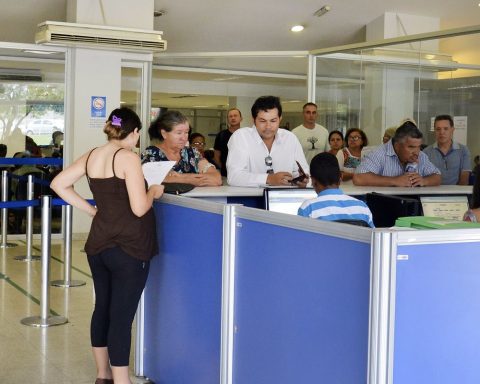On International Women’s Day, celebrated today (8), the Consumer Indebtedness and Default Survey (Peic), carried out by the National Confederation of Trade in Goods, Services and Tourism (CNC), points out that 30.3% of consumers with debts late were women, while 29.1% were men.
At the same time, they are the ones who seek to resolve the problem more quickly: while women were on average 62 days without paying debts, men remained 63.5 days with overdue debts.
The study also shows that 79.5% of women were indebted in February, up 1.1 percentage points compared to January. Among men, the percentage fell by 0.1 point, representing 77.2% of consumers.
The CNC economist responsible for the survey, Izis Ferreira, lists some peculiarities that make the financial situation of women more difficult than that of men. “We are proportionally more numerous in society, but less participative in formal employment, for example. There is a greater predominance of women in informality, and this brings greater vulnerability to income”, explained, in a note, the economist.
credit card
Women have concentrated indebtedness in shorter terms, mainly credit cards. They are proportionally more indebted than men in three types of debt: credit card (86.5% of those in debt), store booklets (19%) and payroll loans (5.9%).
In other types of debt (overdraft, personal credit, post-dated checks, home and car financing and other debts), men outnumber women as a proportion of the total number of debtors.
Izis Ferreira also highlighted that it is increasingly up to women to support their families. “Currently, we have a large number of Brazilian households headed by women, who have more commitments to pay. We have opted for easier options, such as the credit card, which is also the most expensive on the market, because it helps stretch the monthly budget”, she analyzed. “That is why any initiative that leads women to greater awareness and training to better manage domestic finances is so important,” said the economist.
Over-indebtedness
In addition, 18.8% of those in debt consider themselves “very indebted”, the same proportion observed in February last year. The percentage is lower among men – 15.5% of those in debt, a drop of 0.6 percentage points compared to the 16.1% of February 2022. According to the CNC, this indicates that budget conditions are tighter for the female public.
The increase of 0.3 percentage points of families who reported having outstanding debts (post-dated checks, credit cards, overdrafts, store cards, payroll loans, personal loans, car and home installments) was driven by indebtedness of women in February and reached 78.3% of families in the country. Of this total, 17.1% considered themselves highly indebted, an indicator that also grew again after sequential declines since November 2022.
According to the survey, general indebtedness had been pointing to a loss of momentum since the fourth quarter of last year, but advanced in February, with the maturity of expenses typical of the first quarter (taxes, school expenses and contributions to class bodies, among others).
“Consumers feel an improvement in disposable income, as a result of the positive evolution of the labor market and lower inflation,” said CNC president José Roberto Tadros in a statement. As a result, the proportion of families with overdue debts, although still high, dropped slightly in the month, 0.1 percentage points, representing 29.8% of the total number of families.
However, according to Tadros, those with older debts continue to face difficulties in getting out of default due to high interest rates. The February survey also shows that the proportion of consumers unable to pay overdue debts from previous months reached 11.6% of the total, a stable percentage compared to January, but still the highest rate since October 2020.
defaulters
Even with the renegotiations, for every 100 defaulting consumers, 44 arrived in February with debts overdue for more than 90 days. The average payment delay time was 62.7 days, the longest since January 2021. The biggest debt contract in February was among consumers with incomes of three to five monthly minimum wages.
The indicator of overdue debts also decreased in February for the poorest group, with a decrease of 0.9 percentage points. “More robust income transfer programs have supported the budgets of these consumers with lower monthly incomes. In the annual comparison, however, the volume of families with overdue debts increased in all income ranges”, explained Izis.
The percentage of consumers with overdue debts from previous months also fell among the poorest, between January and February, but increased by 2.1 percentage points in the year. The indicator grew, in the annual comparison, only in the first two income brackets, of up to three and up to five minimum wages.

















